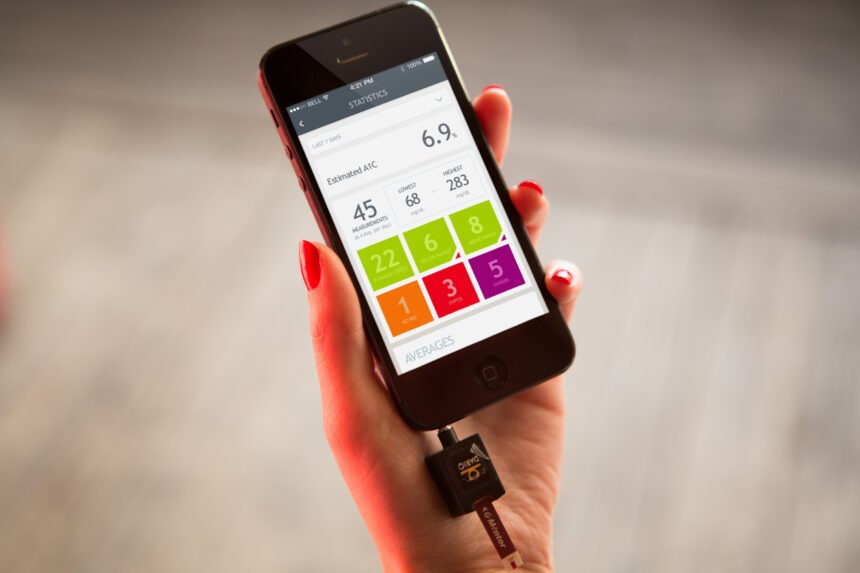Technology is a gift that goes beyond smartphones, which you may be using to read this. More than just for entertainment and convenience, technology is also affecting industries for the better, the most important of which is the healthcare industry. Diseases such as diabetes, for instance, now have better management protocols, all thanks to technology. Patients who have diabetes know that it’s a life-long battle involving treatments, management, and maintenance. In most cases, the condition doesn’t come with a cure. The only way to keep it at normal levels is through proper management. That being said, what are the positive ways in which technology can make diabetes management easier? Continue reading below to find out. But First, What Is Diabetes Technology? It’s important to first define and learn more about what diabetes technology is. Essentially, diabetes technology refers to the software, gadgets, devices, and equipment by groups and manufacturers like Pops Diabetes. These are then used by people with the condition to perform the following functions, to make diabetes management easier: 1. Managing Blood Glucose Levels Managing blood glucose levels is very important for diabetic patients. This refers to the act of measuring the amount of sugar that the blood is transporting. For diabetic patients, the right amount of glucose should be maintained in the body. This means that you must have enough glucose to fuel your cells, but not too much that it overloads the bloodstream. The effective management of blood glucose levels relies on the following functions:
- Collecting and using the data gathered from glucose self-monitoring
- Provider and patient response to blood glucose monitoring
- The need for continuous glucose monitoring, as blood glucose levels regularly change throughout the day
Effective glucose monitoring can be adequately addressed by a glucose monitor, which is an FDA-approved gadget that monitors the patient’s glucose levels day and night. Readings are collected and updated at 15-minute intervals. This gadget is important as it provides information that can help the doctor make better recommendations regarding the patient’s treatment plan and the overall management of their condition. 2. Keeping Diabetic Complications Away Diabetes is a lifetime disease. This means that once you have it, it stays in your body forever. Generally, there’s no cure. It’s only through treatment that proper management is achieved, which thereby keeps diabetic complications away. This is also very important, as diabetic complications can be very serious and can also be potentially life-threatening. With technology, it’s now easier to keep diabetic complications away through the following means:
- There are now mobile apps for diabetic patients for better meal planning. This helps diabetic patients choose their carbs carefully.
- Fitness trackers help diabetic patients track their physical activity.
- There are also sleep monitors that input the quality of your sleep, and how long you’ve been sleeping.
- Gadgets that can help patients manage stress better are now also present, such as portable music players and apps.
3. Improving The Patient’s Quality Of Life Technology has expanded the management of diabetes for it to now include the use of some of the most high-tech equipment. These gadgets have one goal in common: to make the patient’s quality of life better by improving how they can manage their disease. In the past, collecting blood sugar and injecting insulin into the body can be painful. Today, it’s less cumbersome to do, and less painful as well. It’s easier for diabetic patients to go about with their daily lives without having to be burdened by the pain and discomfort diabetes may bring. 4. Providing Self-Management Support Self-management support also plays an important role in the better management of diabetes. This means that things that could’ve been done only by medical professionals can now be performed even by patients at home. Their visits to the hospital can be less frequent, as they can better manage their diabetes themselves. Here are some ways that diabetes technology has made this possible:
- The existence of gadgets such as pedometers enable patients to practice fitness at home. They don’t necessarily have to go to the gym all the time and hire the services of a professional. Apart from being time-consuming, this can be costly. The pedometer is a gadget that has existed many years back and is continuously being used, especially since its functionality has improved. Apart from just taking note of the steps taken in a day, it also keeps more detailed logs of all your health activities. A pedometer can manage your movements and exercises, which also form a significant part of diabetes management.
- Mobile apps allow patients to interact with other patients with so much more ease. Not only do they have access to support groups, but their questions can also be answered immediately.
- Correspondence between the patient and the doctor is also now easier through technology. Rather than having to go to the hospital even for minute concerns, other means of communication over the Internet is now possible. Even sending in results from glucose meters can now be done through email.
5. Delivering Insulin Into The Body Patients who have Type 1 Diabetes don’t have enough insulin in their body. If you’re this type of patient, you’ll need to be able to make up for the lack of insulin. Previously, the supply of insulin could be done through self-injection. Today, it can be done through an insulin pump. This gadget enables the patient to have continuous delivery of short-acting insulin throughout the whole day. Conclusion Standards in the medical care of diabetes have indeed been changing for the better. Now, patients have a higher level of care than in the past, all thanks to technology. Gadgets, mobile phone apps, and other high-tech equipment are all contributing to the better management of diabetes. In essence, technology gives new hope to diabetic patients by allowing them to properly manage their condition with ease.

